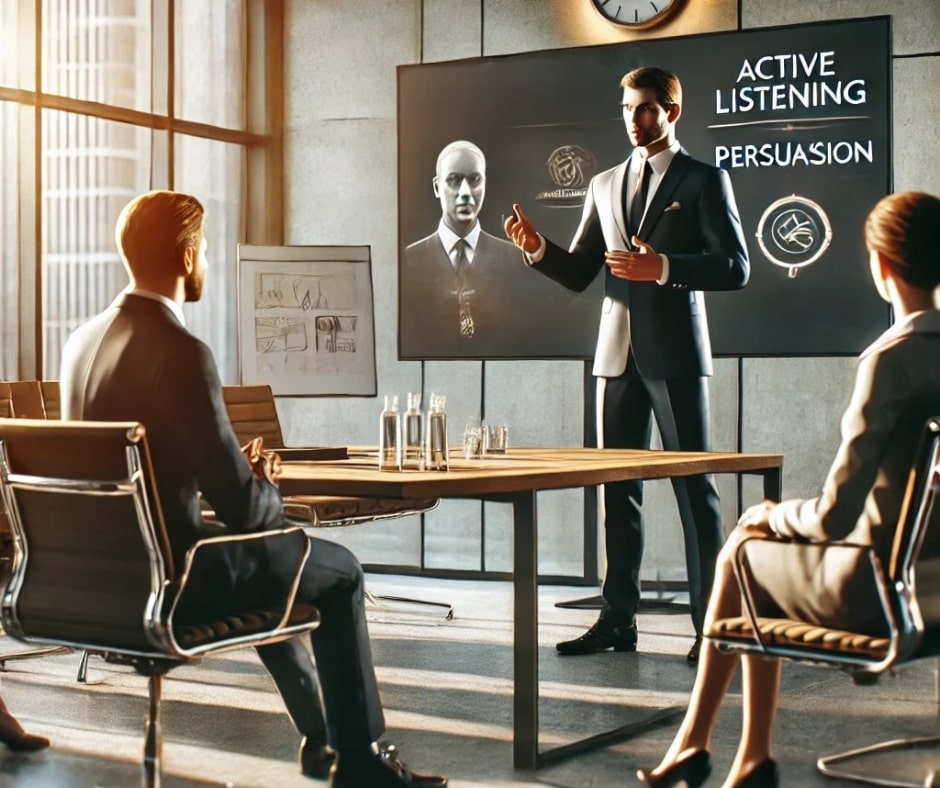Introduction
Mastering communication skills in sales is not just a desirable trait—it is a fundamental necessity. Every successful salesperson understands that closing deals goes beyond simply presenting a product or service. Sales are built on trust, relationships, and the ability to convey value in a way that resonates with the customer. Without strong communication, even the best products can remain unsold.
Effective communication ensures that sales professionals can connect with prospects, handle objections gracefully, and ultimately drive conversions. In this post, we will explore in-depth how communication impacts every stage of the sales process and how you can refine your skills to maximize success.
The Power of Active Listening
One of the biggest misconceptions about sales is that success comes from talking well. In reality, the best salespeople are not the ones who talk the most but those who listen the best. Active listening is a powerful skill that enables sales professionals to understand their prospects’ needs on a deeper level.
What Is Active Listening?
Active listening goes beyond merely hearing words; it involves fully engaging with the speaker and ensuring that their message is understood. This includes:
- Giving undivided attention to the speaker.
- Using verbal affirmations such as “I see” or “That makes sense.”
- Paraphrasing or summarizing key points to confirm understanding.
- Asking relevant follow-up questions.
Why Active Listening Matters in Sales
Active listening fosters trust and rapport with potential buyers. When a prospect feels heard, they are more likely to view the salesperson as a trusted advisor rather than someone simply trying to make a sale. This helps to:
- Build credibility by demonstrating genuine interest.
- Uncover pain points that may not be immediately obvious.
- Avoid making incorrect assumptions about customer needs.
- Tailor the sales pitch more effectively to address real concerns.
Sales professionals who master active listening can position their product as a tailored solution rather than just another generic offering.
The Art of Asking the Right Questions
Asking the right questions can make or break a sales conversation. Thoughtful, well-crafted questions encourage dialogue and help salespeople gather critical insights.
Open-Ended vs. Close-Ended Questions
Understanding the difference between open-ended and close-ended questions is crucial:
- Close-ended questions lead to yes/no responses and can be useful for gathering specific information. Example: “Are you currently using a CRM?”
- Open-ended questions encourage the prospect to share more details, fostering a richer conversation. Example: “What challenges are you facing with your current CRM system?”
Powerful Sales Questions to Ask
Sales professionals should incorporate strategic questions into their conversations, such as:
- Problem Identification: “What’s the biggest challenge you’re currently facing in your industry?”
- Impact-Oriented: “How would solving this challenge impact your business?”
- Decision-Making Process: “What factors are most important to you when selecting a solution?”
- Previous Experience: “Have you tried other solutions before? What worked and what didn’t?”
By asking the right questions, sales professionals can gain a deeper understanding of their prospects’ needs and position their offering more effectively.
The Importance of Clarity and Simplicity
Complexity kills sales. If a prospect struggles to understand your message, they are unlikely to move forward in the buying process.
Simplifying Sales Messages
A clear and concise message ensures that prospects quickly grasp the benefits of your product. Best practices for clarity in sales communication include:
- Avoiding technical jargon unless absolutely necessary.
- Using analogies or real-world examples to explain concepts.
- Breaking down complex ideas into smaller, digestible parts.
The Impact of Confusing Communication
Salespeople who overload prospects with too much information at once risk overwhelming them, leading to decision fatigue. A confused prospect is more likely to say “no” simply because they don’t understand the offer. Keeping communication simple and direct ensures prospects can make informed decisions with confidence.
Handling Objections with Confidence
Every salesperson encounters objections. These objections may be based on price, timing, perceived need, or trust. Handling them with confidence is critical to keeping the conversation moving forward.
Steps to Overcoming Objections
- Acknowledge the concern: “I understand that budget is a concern, and I appreciate you bringing it up.”
- Clarify the objection: “When you say the price is too high, do you mean compared to other solutions you’ve explored?”
- Reframe the objection: “While the upfront cost may seem high, let’s look at the long-term value this will bring to your business.”
- Provide a solution: Offer data, testimonials, or case studies to support your response.
Rather than seeing objections as roadblocks, top salespeople view them as opportunities to provide clarity and reassurance.
The Role of Nonverbal Communication
More than half of communication is nonverbal. In sales, body language, facial expressions, and tone of voice play a huge role in how a message is received.
Key Nonverbal Cues to Master
- Eye contact: Shows confidence and engagement.
- Open body language: Arms uncrossed, relaxed posture signals approachability.
- Mirroring: Subtly matching the prospect’s body language fosters subconscious rapport.
- Tone of voice: A well-modulated tone conveys professionalism and enthusiasm.
Sales professionals who align their nonverbal communication with their verbal messages create a more compelling and trustworthy presence.
Closing the Sale with Persuasion
Closing a deal isn’t about pushing a sale—it’s about proving value. Persuasion techniques can help reinforce why the prospect should take action.
Persuasive Techniques That Work
- Social Proof: “Many businesses in your industry have switched to our solution with great success.”
- Urgency: “We have a special rate available until the end of the month.”
- Storytelling: Sharing customer success stories makes the benefits more relatable.
- Assumptive Close: “Would you like to go with Option A or Option B?”
By applying these techniques, sales professionals can guide prospects toward confident buying decisions.
Conclusion
Developing communication skills in sales is an ongoing journey that can significantly impact success. From active listening and asking the right questions to handling objections and leveraging nonverbal cues, every aspect of communication plays a role in building relationships and closing deals.
By refining these skills, sales professionals can position themselves as trusted advisors, making each interaction more meaningful and productive. The better you communicate, the more you sell!













